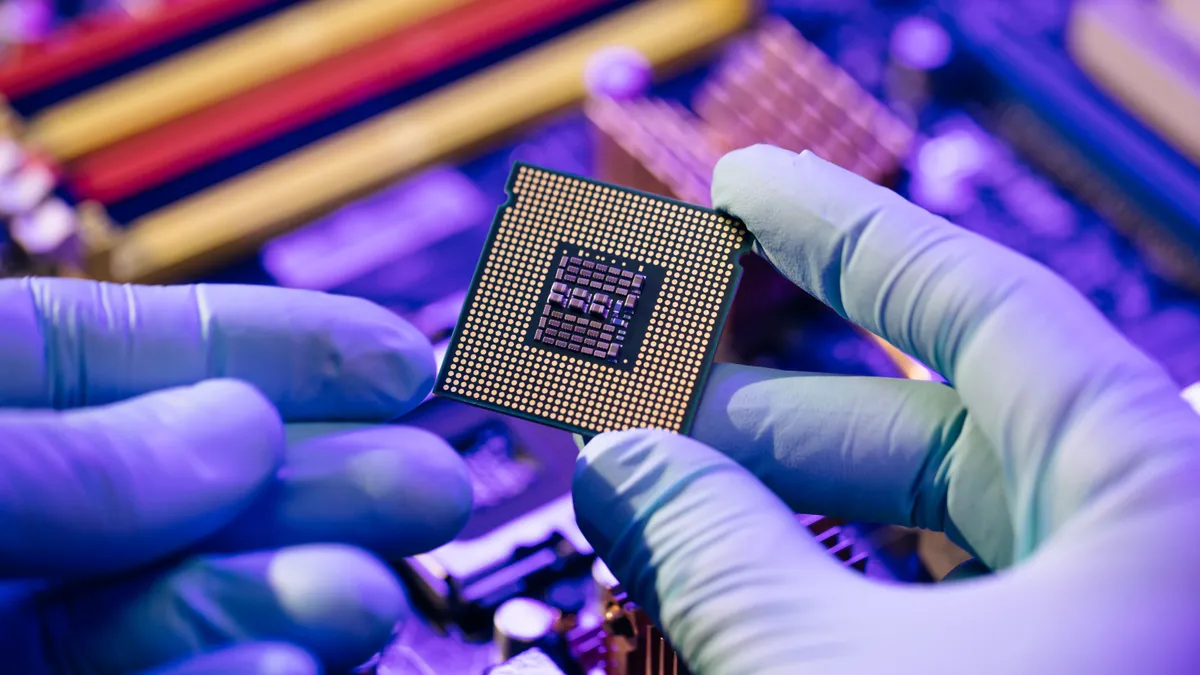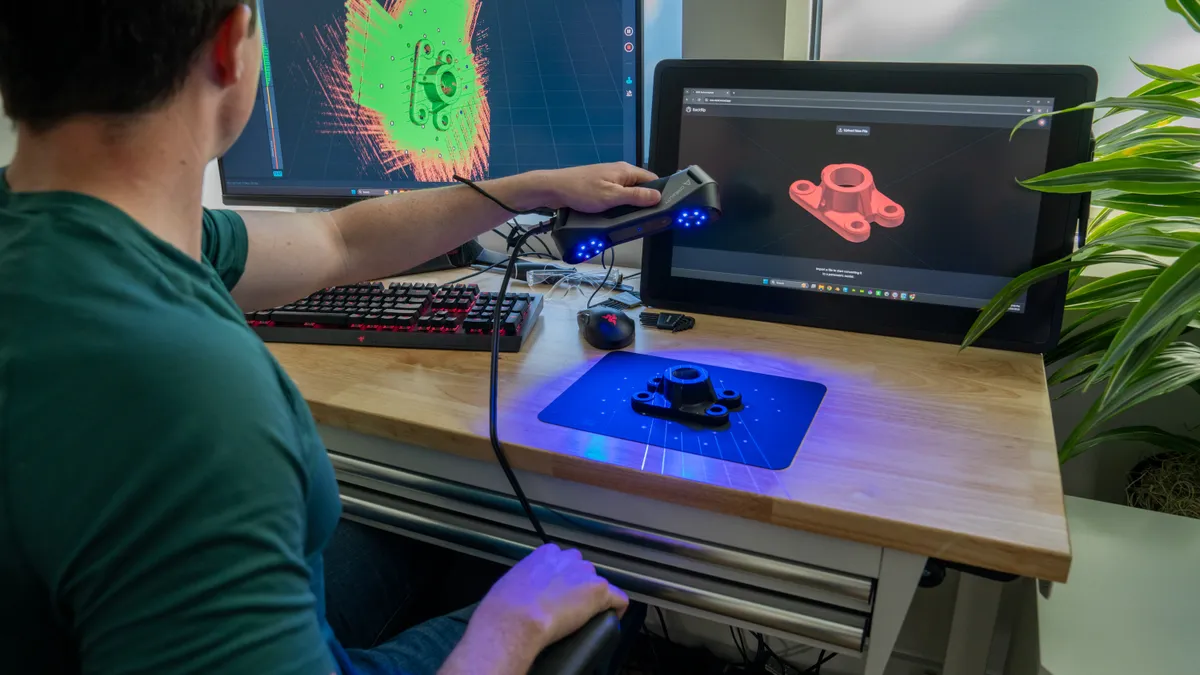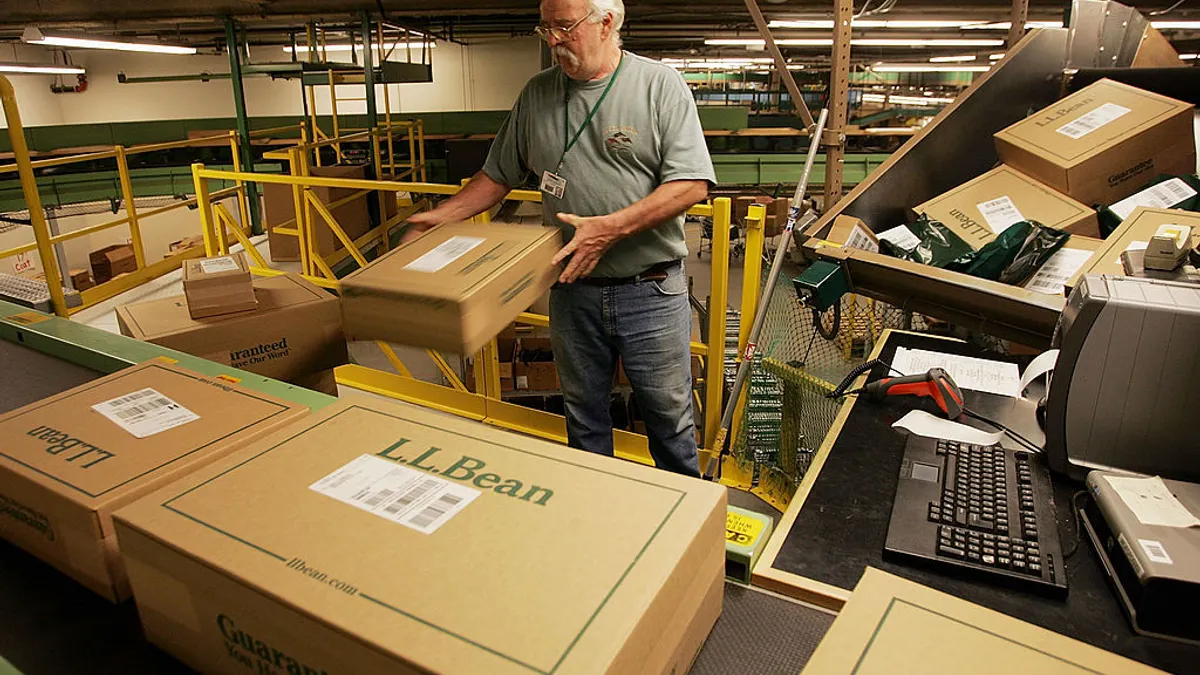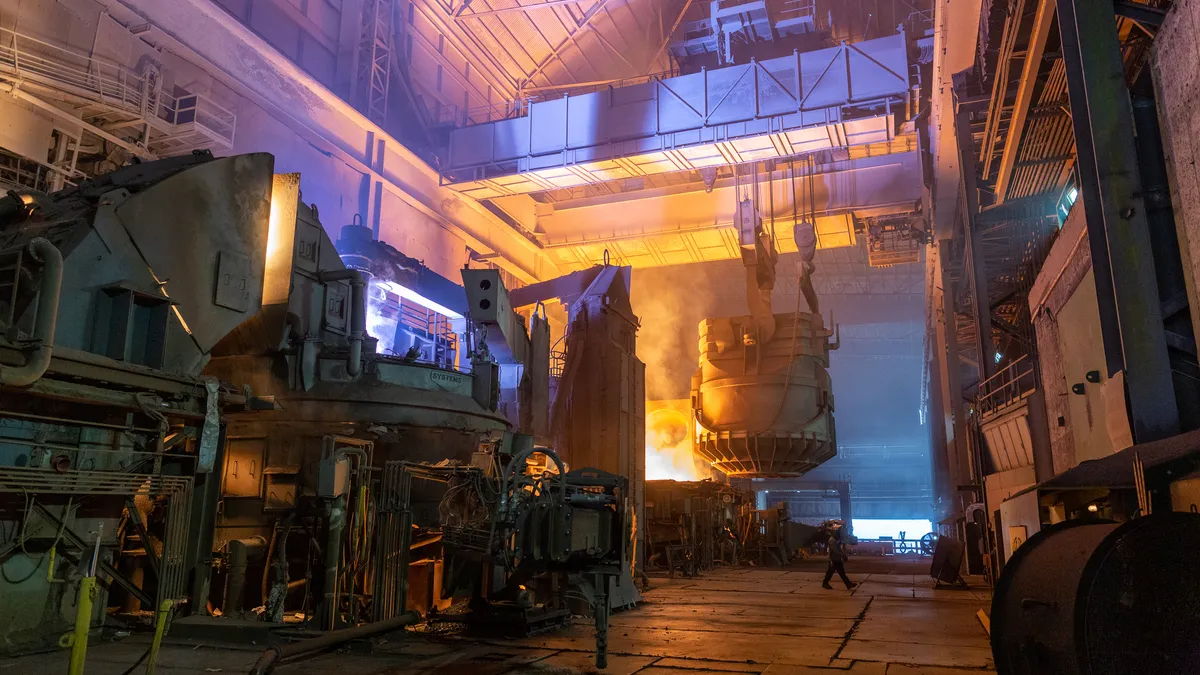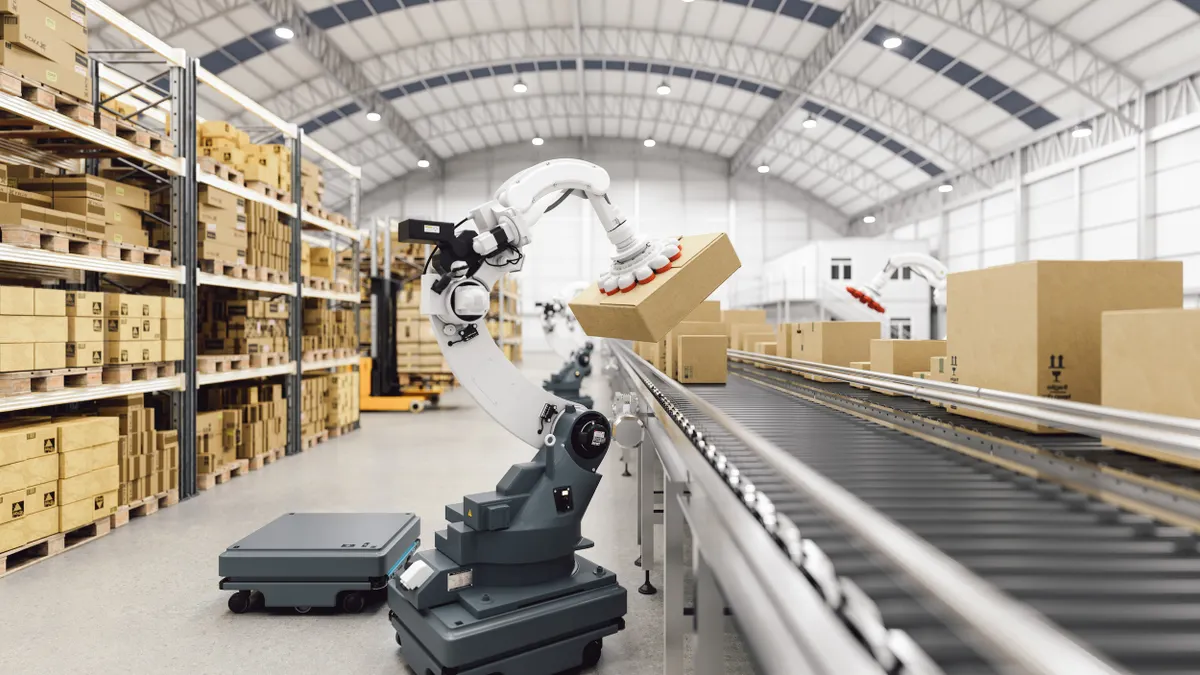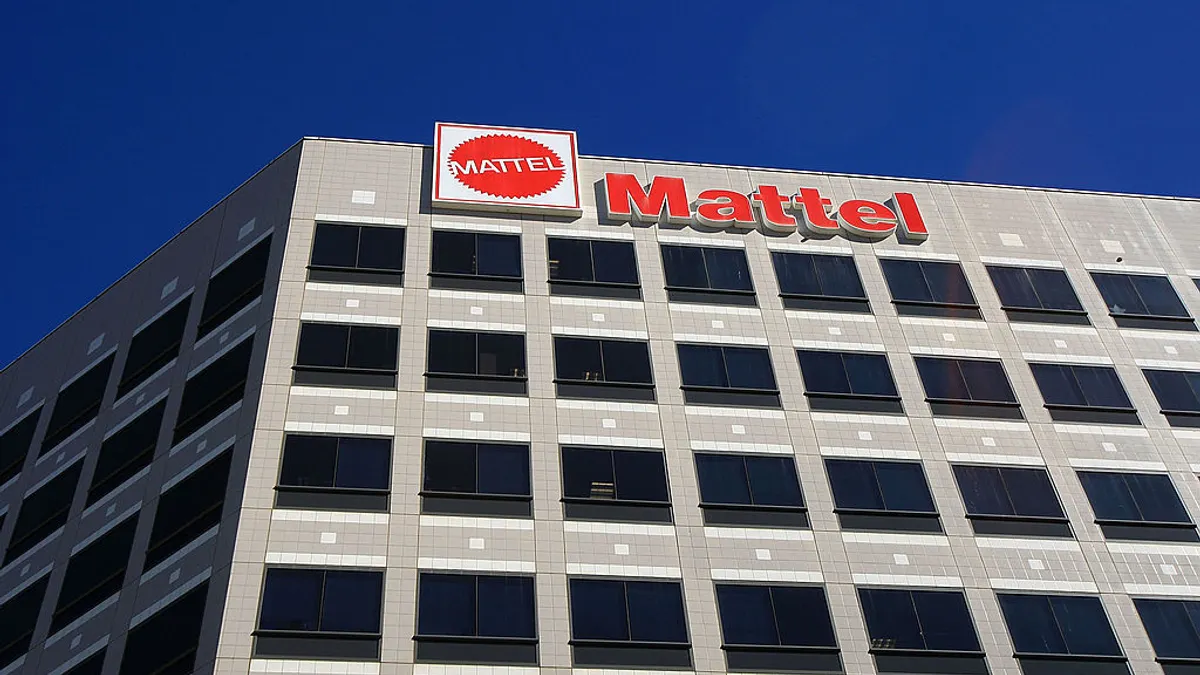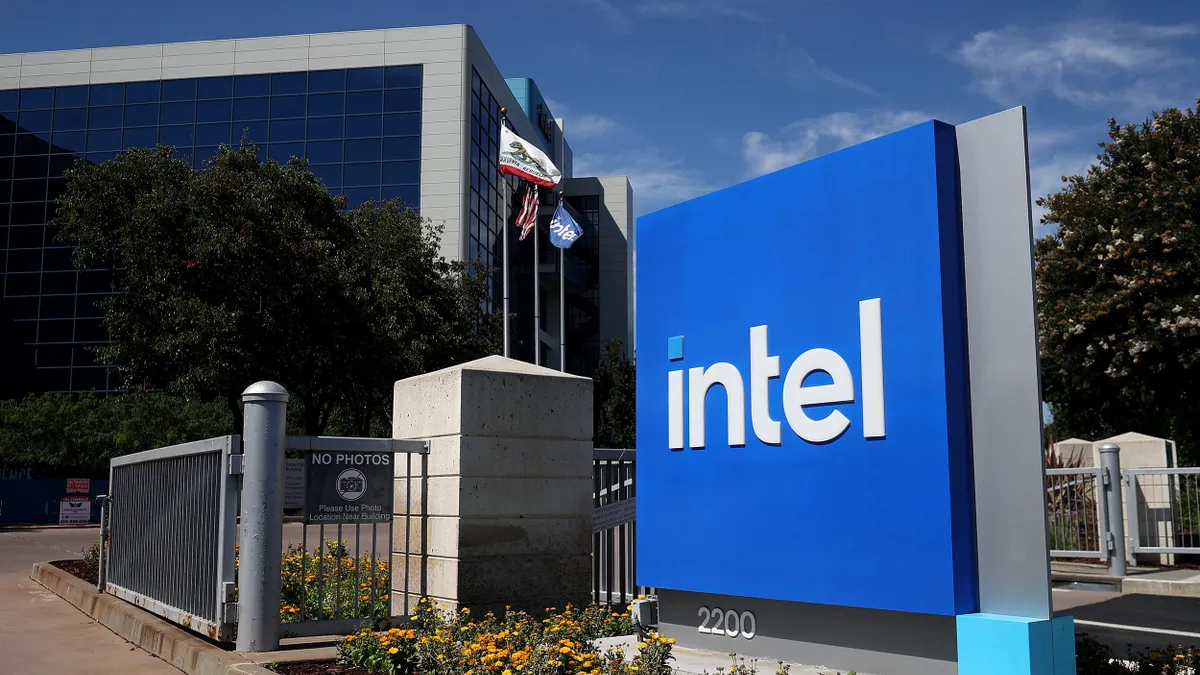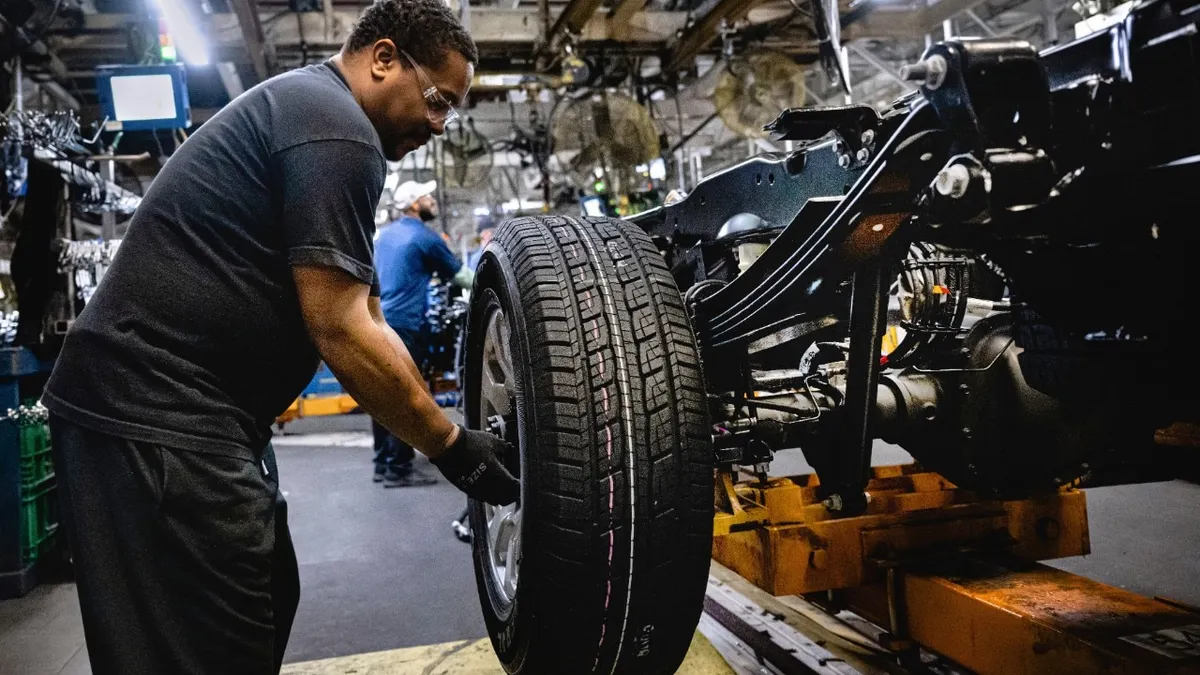U.S. semiconductor manufacturing will continue experiencing major growth this year, fueled by advancements in artificial intelligence, electric vehicles and data centers.
Setting the stage for much of this growth is the CHIPS and Science Act, which has played a pivotal role in onshoring semiconductor production and bolstering the industry's supply chain resilience. The landmark law includes $39 billion to stand up semiconductor manufacturing projects across the U.S., turning states like Arizona and New York into chipmaking hubs.
Meanwhile, AI-driven technologies, including Nvidia processors and Intel’s advanced nodes, are spurring heightened demand for next-generation chips, while the automotive sector is poised for a surge in semiconductor use as electrification accelerates.
Despite these opportunities, the industry still faces challenges, including a persistent talent gap and a strain on resources in constructing fabrication plants. Workforce development initiatives, energy-efficient innovations and strategic responses to changing trade policies are key 2025 priorities for many chip companies as the U.S. tries to position itself as an industry leader against competitors like China and Taiwan.
1. AI, energy efficiency drive demand
When it comes to semiconductor demand, AI-based chips are predicted to see double digit growth through 2030, according to Joe Stockunas, president of semiconductor industry association SEMI Americas.
“AI chips, the most attractive chips to the marketplace right now, have a whole lot more value in the marketplace,” Stockunas said.
Some experts say there could be negative consequences to the skyrocketing demand, however, potentially even leading to another chip shortage.
“Going into 2025, I think there are certain areas within the supply chain that are still tightly constrained, and a lot of that is driven by AI,” said Anne Hoecker, head of Bain & Co.'s technology and cloud services practice in the Americas. There are constraints with the packaging technologies that go into Nvidia chips as well as some high bandwidth memory chips, she said.
Sustainably produced chips will also be key to maintaining the power needed to supply data centers and high-tech vehicles, according to Chris Richard, Boston Consulting Group managing director and partner.
“Chips that are more energy efficient are going to be real winners," Richard said. "Energy efficiency is going to be a real buying factor going forward. Just because this is a real issue, just getting enough electricity to run these things."
In addition to AI, the industry is aiming to meet growing demand for chips in advanced automobiles, especially electric vehicles.
The demand for electrification is fueling a demand for higher voltage systems, also growing the semiconductor industry, according to Stockunas.
“We're part of the solution in being able to make EVs that will go further and charge faster. And the key there is moving up to higher voltage systems,” he said. The automotive sector is expected to see semiconductor demand triple by 2030, Stockunas added.
To stay competitive, Richard said focusing on a specific part of the semiconductor market will offer more of a an advantage.
“When you're innovating, trying to do something very new, I think they have to focus,” Richard said. “You can't be too diversified unless you're just rolling in cash, right? But most companies aren't doing that. I think diversification of products, of mix, takes on more of a role as the markets mature more.”
2. Qualified labor remains scarce
The industry continues to face a worker shortage. Qualified workers, including engineers, technicians and fab operators, are in high demand, but the talent pipeline has struggled to keep pace.
When it comes to standing up new facilities, Hoecker said recruiting talent is just as important as supply chain strategies.
“How do you get on the ground training, whether that’s transferring people to existing locations? Do you bring people in? There is kind of a mobility element to this,” she said.
Taiwan Semiconductor Manufacturing Co., for example, had to start bringing in workers from Taiwan for its upcoming fabs in Arizona after a talent shortage forced it to delay construction.
There’s also major competition for workers in the technology space.
“We just don't have as many people going into the science and engineering jobs that semiconductor companies need,” Richards said. “There are very popular software companies that compete for the same talent from the same top universities. So it's been an ongoing issue.”
3. The power of the CHIPS and Science Act
Thus far, the Commerce Department has finalized $30.6 billion in CHIPS funding for 19 companies and proposed $1.7 billion to 13 chipmakers, using the majority of its $39 billion bucket.
“I think of all the announcements and the build-out in the U.S., a lot of it is because it’s CHIPS Act money. People bringing more capacity back in," Hoecker said. "We've seen a lot of that money already allocated out to different players across the spectrum of memory, logic, leading edge, more specialty semiconductors."
Yet the future of the CHIPS Act remains unknown under the new Trump administration. The president said during his campaign that he favors tariffs over subsidies and tax credits to convince companies to build manufacturing facilities in the U.S.
The CHIPS Act has spurred monumental growth for major companies, both foreign and U.S.-based. Some of the top awardees of CHIPS funding are TSMC, Intel and Samsung Electronics, all with awards of more than $6 billion.
Expected to create over 58,000 jobs, 90 new semiconductor projects have been announced across the U.S. since 2022, including new semiconductor manufacturing facilities, expansions of existing sites and projects that supply the materials and equipment used in chip manufacturing, according to the Semiconductor Industry Association.
4. Maintaining a global, yet resilient supply chain
Demand for building on U.S. soil will continue to grow in 2025, according to Hoecker. She said companies are going to request to buy from a U.S. fab, not from ones in foreign countries.
However, Trump’s promises to impose high tariffs and the unclear future of the CHIPS Act are creating uncertainty in the semiconductor industry.
“We don't know what's going to what's going to happen, but I do think it's important for everyone to start thinking about ways to potentially think about making sure their supply chain is resilient as these tariffs come up, because I do think we'll see things different over the next couple of years,” Hoecker said.
To plan for the future, she urged semiconductor companies to look at the past to evaluate how to handle their supply chains, especially if demand is superseding growth.
“The key learnings of the last shortage was that things can change faster than expected,” Hoecker said. “So having a little bit of inventory is helpful, but also just having a really broad view of what's going on in industries outside your own is very important."
Hoecker added that it’s vital to know not just what’s going on in your company or industry but elsewhere in the economy too.
“You can often be surprised in other parts of your supply chain,” she said.



